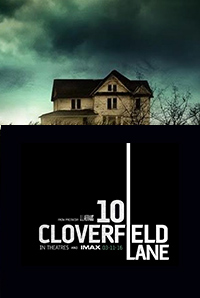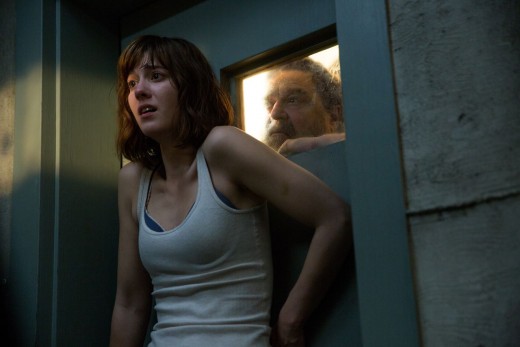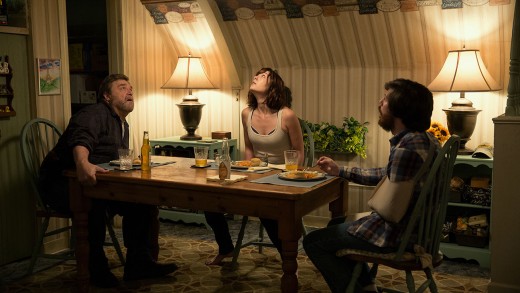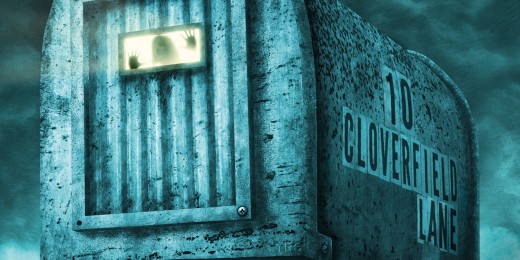- HubPages»
- Entertainment and Media»
- Movies & Movie Reviews»
- Science Fiction & Fantasy Films
10 Cloverfield Lane: The Safest and Loneliest Place on Earth

"People are strange creatures. You can't always convince them safety is in their best interests."
So intones Howard Stambler (John Goodman) to his captive Michelle (Mary Elizabeth Winstead) in the science-fiction psychological thriller 10 Cloverfield Lane. Michelle is not sure it is in her best interest to stay in the underground bunker with Howard. Leaving the bunker could be in her worst interests, if what Howard is saying is true. She doesn't know if Howard is telling the truth, though.
Being told the world has come to an end is hard to believe, with only some proof. But "some" evidence of the apocalypse is more than enough for people to take things a little slower and try and digest the insanity.
And the scenario, for Michelle, truly is an insane one.
Everything starts when she wakes up after a car accident trapped in an underground bunker beneath a farmhouse owned by the very emotionally distant owner Howard. Howard reveals he saved her life after she was involved in a car accident. He cannot let her or another member of the bunker, Emmett, free. The air is toxic due to contamination by either a nuclear attack or a chemical one. Or maybe there was an alien invasion.
Is all this true? Michelle never knows for sure, but Emmett is convinced. And Howard is convincing. Being convincing is not the same as being truthful. Has Howard crafted an elaborate plan for some nefarious purpose? Is his belief that the world has ended rooted in being insane? Audiences have to watch the film to its conclusion to realize the truth behind the events in the feature.
10 Cloverfield Lane follows a trend in horror, fantasy, and sci-fi movies emerging in recent years. Feature-length film versions of scripts that, in a previous generation, these narratives were more appropriate for television programs such as The Twilight Zone or Night Gallery. Outstanding features such as Ex Machina and The Gift are two examples of films that carry a mystery until a shocking conclusion. The compelling nature of ensures enthralled audiences looking for something that is both cerebral and emotional in their science-fiction.
Such audience members are the ones who keep the "cult following" of a feature alive for generations.

A Lonely, Complacent Place
Making the best of the lonely environment of the fallout shelter is hardly easy. At least everyone tries.
A strange sense of family is achieved over time. Whether Howard is telling the truth is irrelevant as long as the other two members of the "household" believe the end of the world has finally arrived. A humorous musical sequence shows all three going about their business as if they were a family spending time together on a Saturday night. They eat dinner, play games, build puzzles, watch an old VHS tape, and generally bond in comfort with each other's company. Both ironically and appropriately, the music that plays in the background is Tommy James and the Shondells' I Think Were Alone Now.
Normalcy and even complacency begin to sink in. Of course, there is nothing ordinary about the situation, and being complacent in a science-fiction or horror feature leads to terrible things.
Still, the scene works with bringing the audience into the film since we all have fond memories of joyous times with friends and family - even when those times were not always the most positive ones. Being trapped in a bunker could share a kinship with living in a household when family members are unemployed and very limited in what they can do in life. It doesn't mean people don't have each other.
.

A Lonely State of Being
Not everyone in the family finds easy peace in the environment.
Howard remains incredibly emotionally distant. We assume this is because he lost someone who he loved and no longer can connect with others. The sad and tragic irony here is Howard's emotional state probably be - sadly - similar to what it may have been like before the ending of the world. For Howard, the world already ended when he lost his loved one.
The only time Howard shows any vibrancy and life is when he allows himself to be absorbed by "old-time" music. Perhaps the sounds of the jukebox bring him back to a happier time. His viewings of the 1980's classic teen film 16 Candles, a comedy, are a melancholy experience rather than a joyful one. The film only reminds him of a lost beloved.
A dreading sense of loneliness is not something anyone would ever hope to feel, but some can't avoid it. 10 Cloverfield Lane taps into subconscious emotions a viewer may feel. People discover themselves trapped in a world within a world. The hidden bunker is a lonely place hidden away from a much larger world. People can create similar bunkers for themselves and try to hide from a painful world they do not wish to endure. Howard exemplifies these feelings. Michelle reflects the person who refuses to accept a lonely, isolated planet. She desires to escape even if this means venturing into the unknown, the risky, and the uncertain.
Consider both sci-fi embodiments of a person trapped in a dead-end job. One person may choose to accept his/her lot in life because, while unfulfilling, the environment is defined, controlled, and acceptable. To another, leaving security for a riskier new endeavor is easier to do than suffering in the banality of a boorish, by-the-numbers existence.
Science-fiction is a genre designed to be thought-provoking and inspiring. 10 Cloverfield Lane may be generating a subliminal message to audience members to reevaluate their lonely lot in life and break out of the self-contained world they live. Or the film could be sending messages to stay in one's place and remain safe.

Lonely Existences Have Their Rewards
As lonely as it may be to live in an underground bunker, doing so is far preferable to a horrible demise on the surface. Lonely existences are sometimes necessary, depending on a person's circumstances. No one would want to remain in a bunker forever and, perhaps, there will come a time when leaving the bunker is appropriate. Similarly, there could be points in one's life in which loneliness and complacency are worth embracing for the short-term with an eye on the long-term benefits of such decisions. Maybe right now isn't the most advisable time to change jobs.
In a lonely void, there may be a semblance of safety. A question that is worth asking, "Is it worth being alone to remain safe?" Circumstances dictate the answer to that question. The response to the question also hinges on the limited knowledge found in a particular chance, which makes arriving at an answer both more difficult and speculative. Easy answers, in life and science-fiction, are not usually found. A cask of pondering is required before making a decision and, even then, no outcomes are guaranteed. Michelle learns this lesson at the film's unexpected conclusion.
Evaluating themes and motifs in 10 Cloverfield Lane does not allow anyone to arrive and clear-cut answers. To do so would not only unnecessarily preachy, the action would go against the core of all good works of science-fiction. Speculative works intend to stimulate thought. Looking beyond the mystery and action in the narrative and peering into the subtext does open a hidden bunker's door to many things worth pondering.
And that alone makes this sleeper-hit film worth viewing.








